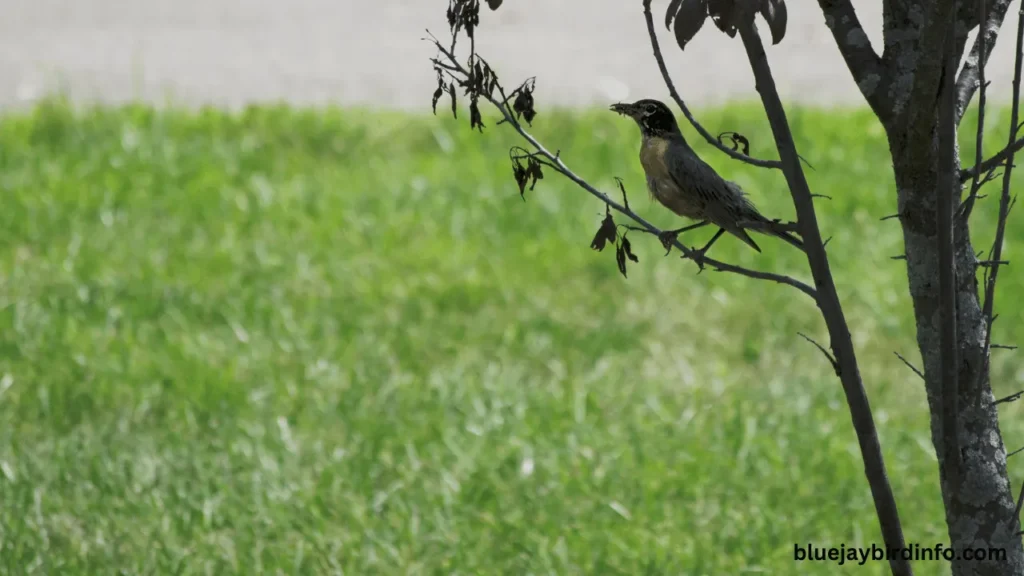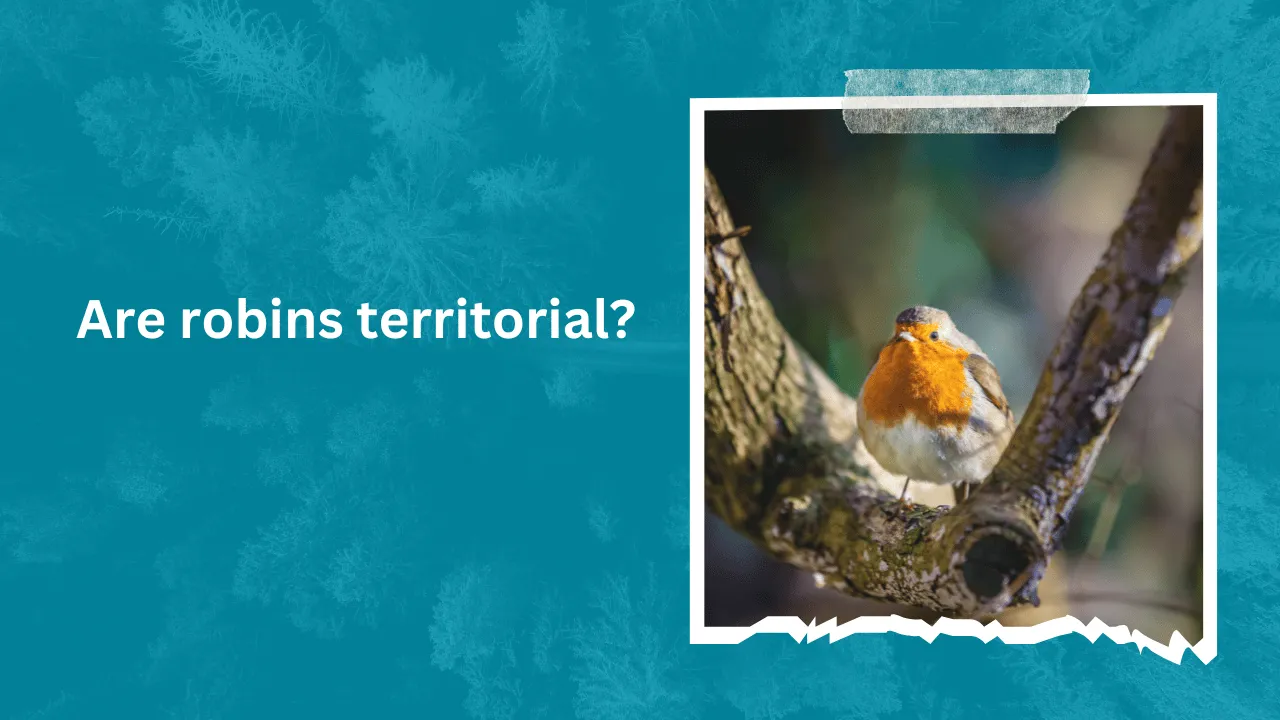We all know the cheerful sight of a red-breasted Robin hopping across our lawn.
Their melodic songs are a welcome sign of spring, and their presence fills our backyards with a sense of peace. But beneath that seemingly friendly exterior lies a surprising truth: Robins can be fiercely territorial.
Imagine this: you’re enjoying a cup of coffee on your patio, gazing at a Robin happily hopping around. Suddenly, another Robin appears, and a flurry of feathers erupts as they chase each other in a frantic frenzy. This surprising territorial behavior might leave you wondering: just how feisty are these familiar birds?
Why do they become so aggressive towards their own kind?
In this blog post, we’ll delve into the fascinating world of Robin territoriality. We’ll explore the reasons behind their aggressive displays, the factors influencing their territory size, and even how their behavior impacts the delicate balance of the backyard ecosystem.
So, grab your binoculars and prepare to be surprised as we uncover the hidden fierceness of our favorite feathered friend, the Robin.
Contents
- 1 Territorial Behavior
- 2 Factors Influencing Territoriality
- 3 Aggressive Behaviors
- 4 The Role of Hormones
- 5 Conservation Implications
- 6 Conclusion
- 7 FAQ’s
- 7.0.1 Why do Robins defend their territories so fiercely?
- 7.0.2 How do Robins establish their territories?
- 7.0.3 What are the consequences of territorial disputes?
- 7.0.4 How does habitat loss affect Robin territoriality?
- 7.0.5 Can I attract Robins to my yard?
- 7.0.6 How can I avoid disturbing Robin territories?
Territorial Behavior
A territory is a defined area that an animal defends against intrusion by others of its species. Robins are highly territorial, especially during the breeding season.
The size and shape of a Robin’s territory can vary depending on factors such as food availability and population density. Typically, a territory will encompass a suitable nesting site and sufficient foraging grounds.
To defend their territories, Robins employ a variety of aggressive behaviors. These include:
- Singing: Robins use their songs to advertise their territory and deter intruders.
- Posturing: They may puff up their feathers, spread their wings, and adopt a threatening posture.
- Physical Confrontations: In more intense disputes, Robins may engage in physical fights, involving chasing, pecking, and even biting.
Factors Influencing Territoriality
Several factors can influence the intensity of territorial behavior in Robins:
- Breeding Season: Territoriality is most pronounced during the breeding season when Robins establish nesting territories and defend them from rivals.
- Food Availability: When food is scarce, Robins may become more territorial, defending smaller territories with richer food resources.
- Population Density: In areas with high population density, competition for territories can be intense, leading to more aggressive behavior.
Aggressive Behaviors
Song and Display: Robins use their songs to advertise their territory and deter intruders. They may also perform threat displays, such as wing-fluttering and tail-fanning, to intimidate rivals.
Physical Confrontations: In more serious disputes, Robins may engage in physical confrontations, such as chasing, pecking, and biting. These fights can result in injuries, and in rare cases, even death.
Injury and Mortality: While most territorial disputes result in minor injuries, severe confrontations can lead to significant harm or even death.
The Role of Hormones
Hormones play a crucial role in regulating territorial behavior. Testosterone, in particular, is linked to increased aggression and territoriality. During the breeding season, testosterone levels in male Robins rise, leading to more intense territorial defense.
Seasonal Variations in hormone levels can influence the intensity of territorial behavior. As the breeding season progresses and testosterone levels decline, territorial aggression may decrease.
Conservation Implications

Habitat loss and fragmentation can negatively impact Robin territorial behavior. When suitable nesting and foraging sites are limited, competition for territories can intensify, leading to increased aggression and reduced reproductive success.
Human disturbance can also disrupt Robin territories. Activities such as gardening, birdwatching, and construction can stress birds and interfere with their breeding and foraging activities.
Conclusion
To conserve Robin populations, it is important to protect their habitats, minimize human disturbance, and promote practices that support bird diversity.
By understanding the factors that influence Robin territoriality, we can take steps to protect these beloved birds and ensure their continued presence in our backyards.
FAQ’s
Why do Robins defend their territories so fiercely?
Robins defend their territories to secure access to resources like food, nesting sites, and mates. This territorial behavior ensures the survival and reproductive success of the individual and their offspring.
How do Robins establish their territories?
Robins establish their territories through a combination of vocalizations, displays, and physical confrontations. They sing to advertise their territory and deter intruders, and they may also engage in aggressive behaviors such as chasing and fighting.
What are the consequences of territorial disputes?
Territorial disputes can lead to injuries, such as wing damage or loss of feathers. In severe cases, individuals may be killed during fights.
How does habitat loss affect Robin territoriality?
Habitat loss can lead to increased competition for territories, as fewer suitable nesting and foraging sites are available. This can result in more aggressive behavior and reduced reproductive success.
Can I attract Robins to my yard?
Yes, you can attract Robins to your yard by providing a variety of food sources, such as birdseed, mealworms, and fresh fruit. You can also create a bird-friendly environment by planting native plants, offering clean water sources, and providing nesting sites.
How can I avoid disturbing Robin territories?
To avoid disturbing Robin territories, it’s important to minimize human activity in areas where Robins are nesting or foraging. Avoid pruning trees or shrubs near nests, and keep pets away from nesting sites.








